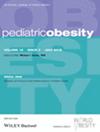Variation in ultra-processed food consumption from 6 to 15 years, body weight and body composition at 15 years of age at The Pelotas 2004 Birth Cohort
Abstract
Background
The association of ultra-processed food (UPF) consumption with obesity and adipose tissue in children/adolescents remains poorly understood.
Objective
To assess the association of UPF consumption with excessive weight (EW—defined as BMI-for-age ≥+1 z-score) and body composition at 15 years.
Methods
In a birth cohort, daily UPF consumption was estimated by Food Frequency Questionnaires at 6 and 15 years. Those in the higher tercile of UPF consumption at both follow-ups were the ‘always-high consumers’. Air-displacement plethysmography provided fat mass (FM-kg), fat-free mass (FFM-kg), %FM, %FFM, FM index (FMI-kg/m2) and FFM index (FFMI-kg/m2). Logistic regression and linear regression were used to estimate, respectively, odds ratios and beta coefficients.
Results
Amongst 1584 participants, almost one in every seven were always-high consumers. In crude analyses, there was no association between variation in UPF consumption and EW, and body fat parameters were lower in the always-high consumer group than amongst the always-low consumers, in both sexes. With adjustment for confounders, the odds ratio for EW was higher in the always-high consumer than amongst the always-low consumer group, and the direction of the associations with FM parameters was reversed: males from the always-high consumer group presented almost twice as high FM (10.5 vs. 18.6 kg; p < 0.001) and twice as high FMI (3.4 vs. 6.3 kg/m2; p < 0.001) than the always-low consumer group, and females from the always-high consumer group presented on average 32% more FM and FMI than the always-low consumer group.
Conclusions
In crude and adjusted analyses there was a strong association between high UPF consumption from childhood to adolescence, EW and higher body fat parameters at 15 years, but its deleterious association with body adiposity was only uncovered after adjusting for confounders.

 求助内容:
求助内容: 应助结果提醒方式:
应助结果提醒方式:


